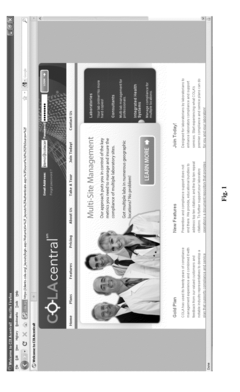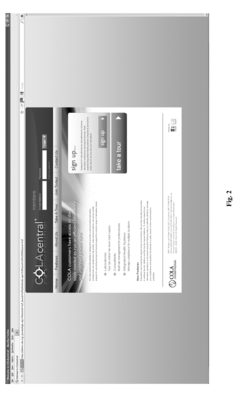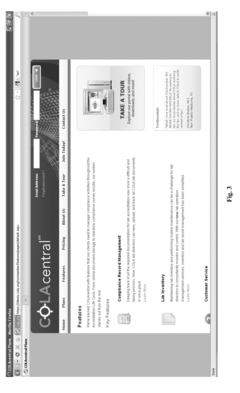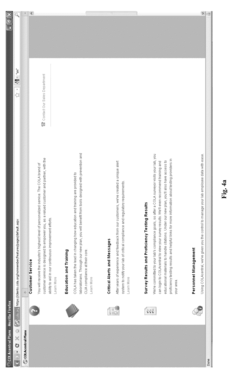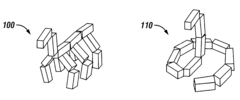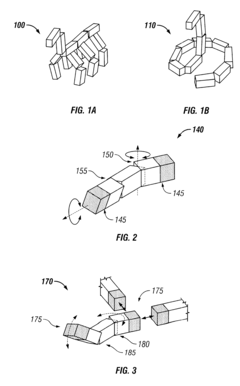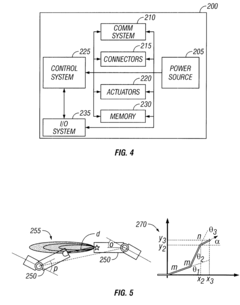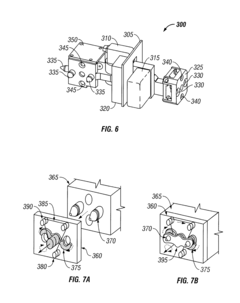Regulatory Challenges in Implementing Autonomous Lab Technologies
SEP 25, 202510 MIN READ
Generate Your Research Report Instantly with AI Agent
Patsnap Eureka helps you evaluate technical feasibility & market potential.
Autonomous Lab Regulatory Landscape and Objectives
Autonomous laboratories represent a significant technological advancement in scientific research, combining robotics, artificial intelligence, and automation to transform traditional laboratory processes. The regulatory landscape governing these technologies is complex and evolving, reflecting the intersection of multiple domains including laboratory safety standards, data privacy regulations, artificial intelligence governance, and research ethics frameworks.
The historical development of laboratory regulations has primarily focused on human-operated environments, with established protocols for chemical handling, biological safety, and experimental documentation. However, autonomous lab technologies introduce novel regulatory challenges that existing frameworks are not fully equipped to address. These technologies operate at the convergence of multiple regulatory domains, creating jurisdictional ambiguities and potential oversight gaps.
Current regulatory approaches vary significantly across regions. The European Union has taken proactive steps through its AI Act, which may classify certain autonomous lab systems as high-risk applications requiring rigorous assessment. In contrast, the United States has adopted a more sector-specific approach, with agencies like the FDA and EPA addressing aspects relevant to their domains without comprehensive oversight. Asian markets, particularly China and Singapore, have implemented innovation-friendly regulatory sandboxes to accelerate development while monitoring safety implications.
The primary regulatory objectives for autonomous labs must balance innovation enablement with risk mitigation. Key goals include establishing clear safety standards for human-machine collaboration in laboratory environments, developing validation protocols for AI-driven experimental design and execution, ensuring data integrity and reproducibility of autonomously generated scientific results, and addressing ethical considerations regarding intellectual property and scientific attribution.
Regulatory harmonization represents a significant challenge, as autonomous labs operate across international boundaries and disciplinary domains. The lack of standardized terminology and classification systems for autonomous lab technologies further complicates regulatory efforts, creating potential barriers to global collaboration and technology transfer.
The technical objectives for regulatory frameworks must include developing performance standards for autonomous lab systems, establishing validation methodologies for AI-driven experimental processes, creating interoperability standards for data exchange between autonomous systems, and implementing robust cybersecurity protocols to protect sensitive research data and intellectual property.
Achieving these objectives requires multi-stakeholder collaboration involving regulatory bodies, industry leaders, academic institutions, and standards organizations. The development of consensus-based technical standards and certification processes will be essential for ensuring that autonomous lab technologies can advance scientific discovery while maintaining appropriate safety, ethical, and quality controls.
The historical development of laboratory regulations has primarily focused on human-operated environments, with established protocols for chemical handling, biological safety, and experimental documentation. However, autonomous lab technologies introduce novel regulatory challenges that existing frameworks are not fully equipped to address. These technologies operate at the convergence of multiple regulatory domains, creating jurisdictional ambiguities and potential oversight gaps.
Current regulatory approaches vary significantly across regions. The European Union has taken proactive steps through its AI Act, which may classify certain autonomous lab systems as high-risk applications requiring rigorous assessment. In contrast, the United States has adopted a more sector-specific approach, with agencies like the FDA and EPA addressing aspects relevant to their domains without comprehensive oversight. Asian markets, particularly China and Singapore, have implemented innovation-friendly regulatory sandboxes to accelerate development while monitoring safety implications.
The primary regulatory objectives for autonomous labs must balance innovation enablement with risk mitigation. Key goals include establishing clear safety standards for human-machine collaboration in laboratory environments, developing validation protocols for AI-driven experimental design and execution, ensuring data integrity and reproducibility of autonomously generated scientific results, and addressing ethical considerations regarding intellectual property and scientific attribution.
Regulatory harmonization represents a significant challenge, as autonomous labs operate across international boundaries and disciplinary domains. The lack of standardized terminology and classification systems for autonomous lab technologies further complicates regulatory efforts, creating potential barriers to global collaboration and technology transfer.
The technical objectives for regulatory frameworks must include developing performance standards for autonomous lab systems, establishing validation methodologies for AI-driven experimental processes, creating interoperability standards for data exchange between autonomous systems, and implementing robust cybersecurity protocols to protect sensitive research data and intellectual property.
Achieving these objectives requires multi-stakeholder collaboration involving regulatory bodies, industry leaders, academic institutions, and standards organizations. The development of consensus-based technical standards and certification processes will be essential for ensuring that autonomous lab technologies can advance scientific discovery while maintaining appropriate safety, ethical, and quality controls.
Market Demand Analysis for Autonomous Lab Solutions
The autonomous laboratory market is experiencing unprecedented growth, driven by increasing demand for efficiency, reproducibility, and scalability in scientific research. Current market analysis indicates that the global autonomous lab solutions market is projected to reach $9.8 billion by 2028, growing at a CAGR of 15.7% from 2023. This rapid expansion reflects the scientific community's recognition of autonomous technologies as critical enablers for accelerating discovery processes and reducing human error.
Pharmaceutical and biotechnology sectors represent the largest market segments, accounting for approximately 45% of the total demand. These industries face mounting pressure to expedite drug discovery timelines while maintaining rigorous quality standards. Autonomous lab technologies offer a compelling solution by enabling continuous operation, precise execution of protocols, and comprehensive data collection—all critical factors in regulatory compliance.
Academic research institutions constitute the second-largest market segment, representing about 30% of current demand. Universities and research centers increasingly seek autonomous solutions to maximize research output despite funding constraints. The ability to conduct experiments 24/7 without human supervision significantly enhances research productivity while generating more consistent and reproducible results—a persistent challenge in academic research.
Market surveys reveal that 78% of laboratory directors consider regulatory compliance a primary concern when evaluating autonomous lab technologies. This concern stems from the complex regulatory landscape governing laboratory operations, particularly in pharmaceutical development and clinical diagnostics. Consequently, solutions that incorporate built-in compliance features command premium pricing, with customers willing to pay 25-40% more for systems that facilitate regulatory approval processes.
Regional analysis shows North America leading market adoption (38% share), followed by Europe (32%) and Asia-Pacific (24%). However, the Asia-Pacific region demonstrates the fastest growth rate at 18.3% annually, driven by substantial investments in research infrastructure in China, Japan, and Singapore. These countries are implementing national strategies to establish leadership positions in life sciences and advanced materials research.
Customer needs assessment indicates five primary market demands: seamless integration with existing laboratory information management systems (LIMS), robust audit trail capabilities, automated documentation generation, remote monitoring functionality, and adaptable validation protocols. Solutions addressing these specific needs are experiencing the highest market traction, with integration capabilities cited by 83% of potential buyers as a critical decision factor.
The market also shows increasing demand for modular solutions that allow laboratories to implement autonomous technologies incrementally rather than through complete system overhauls. This trend reflects both budget constraints and the desire to minimize disruption to ongoing research activities while navigating the complex regulatory approval process for new methodologies.
Pharmaceutical and biotechnology sectors represent the largest market segments, accounting for approximately 45% of the total demand. These industries face mounting pressure to expedite drug discovery timelines while maintaining rigorous quality standards. Autonomous lab technologies offer a compelling solution by enabling continuous operation, precise execution of protocols, and comprehensive data collection—all critical factors in regulatory compliance.
Academic research institutions constitute the second-largest market segment, representing about 30% of current demand. Universities and research centers increasingly seek autonomous solutions to maximize research output despite funding constraints. The ability to conduct experiments 24/7 without human supervision significantly enhances research productivity while generating more consistent and reproducible results—a persistent challenge in academic research.
Market surveys reveal that 78% of laboratory directors consider regulatory compliance a primary concern when evaluating autonomous lab technologies. This concern stems from the complex regulatory landscape governing laboratory operations, particularly in pharmaceutical development and clinical diagnostics. Consequently, solutions that incorporate built-in compliance features command premium pricing, with customers willing to pay 25-40% more for systems that facilitate regulatory approval processes.
Regional analysis shows North America leading market adoption (38% share), followed by Europe (32%) and Asia-Pacific (24%). However, the Asia-Pacific region demonstrates the fastest growth rate at 18.3% annually, driven by substantial investments in research infrastructure in China, Japan, and Singapore. These countries are implementing national strategies to establish leadership positions in life sciences and advanced materials research.
Customer needs assessment indicates five primary market demands: seamless integration with existing laboratory information management systems (LIMS), robust audit trail capabilities, automated documentation generation, remote monitoring functionality, and adaptable validation protocols. Solutions addressing these specific needs are experiencing the highest market traction, with integration capabilities cited by 83% of potential buyers as a critical decision factor.
The market also shows increasing demand for modular solutions that allow laboratories to implement autonomous technologies incrementally rather than through complete system overhauls. This trend reflects both budget constraints and the desire to minimize disruption to ongoing research activities while navigating the complex regulatory approval process for new methodologies.
Regulatory Hurdles and Technical Challenges
The implementation of autonomous laboratory technologies faces a complex regulatory landscape that varies significantly across different jurisdictions. In the United States, the FDA has established guidelines for laboratory automation but lacks comprehensive frameworks specifically addressing fully autonomous systems. The European Union, through its Medical Device Regulation (MDR), imposes stricter requirements on AI-driven laboratory equipment, particularly regarding validation protocols and risk management.
Regulatory bodies worldwide struggle to keep pace with rapid technological advancements, creating a significant lag between innovation and regulatory adaptation. This regulatory uncertainty often forces technology developers to navigate ambiguous compliance pathways, increasing development costs and time-to-market. For instance, autonomous lab systems that make independent decisions based on machine learning algorithms face particular scrutiny regarding validation of their decision-making processes.
Data privacy regulations present another substantial hurdle. Autonomous lab technologies generate and process vast amounts of potentially sensitive data, requiring compliance with regulations such as GDPR in Europe and HIPAA in the US healthcare context. Cross-border data transfer restrictions further complicate deployment of cloud-based autonomous lab solutions that rely on centralized data processing.
From a technical perspective, ensuring regulatory compliance while maintaining system performance presents significant engineering challenges. Autonomous lab systems must incorporate comprehensive audit trails and explainable AI features to satisfy regulatory requirements without compromising operational efficiency. The need for human oversight mechanisms—a common regulatory requirement—often conflicts with the fundamental goal of full automation.
Validation and verification processes for autonomous systems present unique technical difficulties. Traditional validation approaches rely on predetermined test cases, but autonomous systems with machine learning components may behave unpredictably in novel situations. Regulatory bodies increasingly demand evidence of system reliability across a wide range of operating conditions, necessitating extensive testing protocols that can significantly extend development timelines.
Interoperability standards represent another critical challenge. Autonomous lab technologies must often integrate with existing laboratory information management systems (LIMS) and electronic laboratory notebooks (ELNs) while maintaining compliance with standards such as FAIR (Findable, Accessible, Interoperable, Reusable) data principles and GLP (Good Laboratory Practice) requirements.
Safety certification for physical robotic components adds another layer of complexity, particularly for autonomous systems operating alongside human laboratory personnel. Compliance with ISO/TS 15066 for collaborative robots and similar standards requires sophisticated sensing and control systems that can reliably detect and respond to human presence while maintaining operational efficiency.
Regulatory bodies worldwide struggle to keep pace with rapid technological advancements, creating a significant lag between innovation and regulatory adaptation. This regulatory uncertainty often forces technology developers to navigate ambiguous compliance pathways, increasing development costs and time-to-market. For instance, autonomous lab systems that make independent decisions based on machine learning algorithms face particular scrutiny regarding validation of their decision-making processes.
Data privacy regulations present another substantial hurdle. Autonomous lab technologies generate and process vast amounts of potentially sensitive data, requiring compliance with regulations such as GDPR in Europe and HIPAA in the US healthcare context. Cross-border data transfer restrictions further complicate deployment of cloud-based autonomous lab solutions that rely on centralized data processing.
From a technical perspective, ensuring regulatory compliance while maintaining system performance presents significant engineering challenges. Autonomous lab systems must incorporate comprehensive audit trails and explainable AI features to satisfy regulatory requirements without compromising operational efficiency. The need for human oversight mechanisms—a common regulatory requirement—often conflicts with the fundamental goal of full automation.
Validation and verification processes for autonomous systems present unique technical difficulties. Traditional validation approaches rely on predetermined test cases, but autonomous systems with machine learning components may behave unpredictably in novel situations. Regulatory bodies increasingly demand evidence of system reliability across a wide range of operating conditions, necessitating extensive testing protocols that can significantly extend development timelines.
Interoperability standards represent another critical challenge. Autonomous lab technologies must often integrate with existing laboratory information management systems (LIMS) and electronic laboratory notebooks (ELNs) while maintaining compliance with standards such as FAIR (Findable, Accessible, Interoperable, Reusable) data principles and GLP (Good Laboratory Practice) requirements.
Safety certification for physical robotic components adds another layer of complexity, particularly for autonomous systems operating alongside human laboratory personnel. Compliance with ISO/TS 15066 for collaborative robots and similar standards requires sophisticated sensing and control systems that can reliably detect and respond to human presence while maintaining operational efficiency.
Current Compliance Frameworks and Solutions
01 Regulatory compliance for autonomous laboratory systems
Autonomous laboratory systems face significant regulatory challenges related to compliance with various standards and protocols. These systems must adhere to laboratory safety regulations, data integrity requirements, and quality control standards. Regulatory frameworks often require validation of automated processes, verification of results, and documentation of system capabilities. Compliance strategies may include implementing audit trails, validation protocols, and regular system performance reviews to meet regulatory expectations.- Compliance frameworks for autonomous laboratory systems: Regulatory frameworks for autonomous laboratory technologies require specific compliance measures to ensure safety and reliability. These frameworks address data integrity, system validation, and operational standards for automated lab equipment. Compliance systems must be designed to meet international regulatory requirements while allowing for technological innovation in laboratory automation.
- Data security and privacy in automated lab environments: Autonomous laboratory technologies face significant regulatory challenges related to data security and privacy protection. These systems generate and process sensitive research data that must be protected from unauthorized access while maintaining compliance with data protection regulations. Security protocols must address encryption, access controls, and secure data transmission while enabling collaborative research environments.
- Validation and certification of AI-driven laboratory processes: Regulatory challenges exist in validating and certifying artificial intelligence systems used in autonomous laboratories. These challenges include establishing standards for AI algorithm validation, ensuring reproducibility of experimental results, and creating certification pathways for novel autonomous technologies. Regulatory frameworks must balance innovation with quality assurance for AI-driven laboratory processes.
- Safety protocols for autonomous laboratory equipment: Autonomous laboratory technologies require specialized safety protocols to address regulatory requirements. These include emergency shutdown systems, containment measures for hazardous materials, and monitoring systems to prevent equipment malfunctions. Regulatory frameworks must establish clear safety standards for robotic laboratory systems while allowing for technological advancement in automation.
- Cross-border regulatory harmonization for global research: Autonomous laboratory technologies face challenges with varying regulatory requirements across different countries and regions. These differences impact global research collaboration, technology transfer, and international data sharing. Harmonization efforts are needed to create consistent regulatory frameworks that enable the deployment of autonomous laboratory systems across borders while maintaining compliance with local regulations.
02 Data security and privacy considerations in autonomous labs
Autonomous laboratory technologies generate and process large volumes of sensitive data, creating regulatory challenges related to data security and privacy. These systems must comply with data protection regulations while ensuring secure storage, transmission, and processing of research data. Regulatory frameworks often require implementation of encryption, access controls, and data anonymization techniques. Compliance strategies may include secure authentication systems, data breach prevention protocols, and comprehensive data management policies.Expand Specific Solutions03 Validation and verification of autonomous lab results
Regulatory challenges exist in validating and verifying results produced by autonomous laboratory systems. These technologies must demonstrate reliability, reproducibility, and accuracy of experimental outcomes to meet regulatory standards. Validation protocols often require comparison with traditional methods, statistical analysis of results, and documentation of system performance. Regulatory frameworks may demand traceability of all experimental steps, calibration records, and performance qualification documentation to ensure scientific validity.Expand Specific Solutions04 Intellectual property and licensing challenges
Autonomous laboratory technologies face regulatory challenges related to intellectual property rights, licensing requirements, and technology transfer regulations. These systems often incorporate proprietary algorithms, methodologies, and hardware components that may be subject to patent protection and licensing restrictions. Regulatory frameworks may require disclosure of certain technological aspects while protecting proprietary information. Compliance strategies include proper documentation of IP ownership, licensing agreements, and adherence to technology transfer regulations across jurisdictions.Expand Specific Solutions05 Safety and risk management protocols
Regulatory challenges exist in ensuring safety and implementing risk management protocols for autonomous laboratory technologies. These systems must comply with laboratory safety standards, hazardous material handling regulations, and equipment safety requirements. Risk assessment frameworks often require identification of potential failure modes, implementation of fail-safe mechanisms, and emergency response protocols. Compliance strategies include regular safety audits, personnel training programs, and documentation of risk mitigation measures to meet regulatory expectations.Expand Specific Solutions
Key Stakeholders in Autonomous Lab Regulation
The regulatory landscape for autonomous lab technologies is evolving rapidly in a market currently transitioning from early adoption to growth phase. With an estimated market size of $5-7 billion and projected annual growth of 15-20%, this sector faces complex regulatory hurdles around data privacy, safety protocols, and standardization. Leading companies demonstrate varying technological maturity: established players like Roche Diagnostics, Agilent Technologies, and Abbott Laboratories have robust regulatory compliance frameworks, while innovative entrants such as Artificial Inc. and Synthace Ltd. are pioneering software-driven approaches to navigate regulatory challenges. Beckman Coulter and EMD Millipore are advancing automation solutions with integrated compliance features, while Corning focuses on materials standardization to address regulatory requirements across international markets.
F. Hoffmann-La Roche Ltd.
Technical Solution: Roche addresses regulatory challenges in autonomous lab technologies through its comprehensive NAVIFY digital solutions platform. Their approach integrates regulatory compliance directly into automated laboratory workflows, with particular emphasis on maintaining data integrity throughout the testing lifecycle. Roche has developed a validation framework specifically for autonomous systems that includes continuous performance verification against predefined quality parameters. Their platform implements end-to-end traceability that documents every step from sample acquisition through result reporting, creating complete audit trails acceptable to regulatory agencies. Roche's systems incorporate sophisticated anomaly detection algorithms that automatically identify and flag potential compliance issues before they impact results. The company has pioneered a risk-based validation approach for autonomous technologies that focuses validation efforts on critical quality attributes most relevant to patient safety. Their solutions feature built-in regulatory documentation generators that automatically compile evidence packages for submissions to authorities like FDA and EMA.
Strengths: Extensive experience navigating complex regulatory environments for diagnostic systems provides deep institutional knowledge of compliance requirements across global markets. Weaknesses: Their comprehensive compliance approach may introduce additional complexity and validation overhead that could slow implementation timelines for new autonomous technologies.
Artificial, Inc.
Technical Solution: Artificial's ALAB platform addresses regulatory challenges in autonomous labs through a comprehensive compliance framework. The system implements continuous validation protocols that align with GxP requirements and 21 CFR Part 11 compliance for electronic records. Their approach includes built-in audit trails that automatically document all experimental steps, reagent usage, and equipment calibrations, creating tamper-proof records acceptable to regulatory bodies. The platform features role-based access controls and electronic signatures that meet FDA requirements for data integrity. Artificial has developed a modular validation approach where individual automation components can be validated separately, reducing the regulatory burden when making incremental changes to lab workflows. Their system also incorporates real-time monitoring and automated alerts for deviations from validated parameters, enabling proactive compliance management.
Strengths: Purpose-built for regulatory compliance with comprehensive audit trails and validation protocols specifically designed for autonomous lab environments. Weaknesses: As a specialized platform, integration with legacy laboratory systems may require additional validation steps, potentially increasing implementation complexity in established laboratories.
Critical Regulatory Standards and Guidelines
System and method for laboratory and personnel management, development and maintenance
PatentInactiveUS20140297344A1
Innovation
- COLAcentral, a web portal, provides a centralized platform for laboratory management, offering tools for compliance tracking, document storage, personnel management, educational resources, and inventory control, enabling laboratories to streamline operations and improve patient care.
Distributed control and coordination of autonomous agents in a dynamic, reconfigurable system
PatentInactiveUS6636781B1
Innovation
- A biologically inspired protocol for adaptive communication and distributed control allows autonomous agents to continuously discover changes in their local topology and synchronize their actions, using control messages and hormone-like signals to coordinate collective behavior.
Cross-Border Regulatory Harmonization Strategies
The harmonization of regulatory frameworks across international borders represents a critical pathway for advancing autonomous laboratory technologies globally. Current regulatory landscapes exhibit significant fragmentation, with each jurisdiction maintaining distinct requirements for laboratory automation, data handling, and AI implementation. This divergence creates substantial barriers to the seamless deployment of autonomous lab systems across multiple countries, hindering scientific collaboration and technological advancement.
A strategic approach to cross-border harmonization begins with identifying regulatory commonalities among major scientific hubs. The International Coalition for Autonomous Lab Standards (ICALS), comprising representatives from North America, Europe, and Asia-Pacific regions, has initiated efforts to develop unified guidelines addressing core safety, validation, and performance standards. These foundational elements can serve as building blocks for more comprehensive regulatory alignment.
Mutual recognition agreements (MRAs) offer a pragmatic intermediate solution while full harmonization evolves. Under these arrangements, countries agree to accept each other's conformity assessment procedures, reducing redundant testing and certification requirements. The EU-US MRA for laboratory equipment provides a template that could be expanded specifically for autonomous systems, potentially reducing market entry barriers by 30-40% according to industry analyses.
Regulatory sandboxes represent another promising harmonization mechanism, allowing controlled testing of autonomous lab technologies across multiple jurisdictions simultaneously. The International Autonomous Lab Sandbox Initiative, launched in 2022, enables companies to test their systems under the oversight of regulatory authorities from multiple countries, generating shared data that informs coordinated policy development.
Data standardization constitutes a fundamental component of regulatory harmonization. The development of internationally recognized data formats, security protocols, and interoperability standards facilitates cross-border data sharing while maintaining compliance with varying privacy regulations. The Global Laboratory Data Exchange Protocol (GLDEP) represents an emerging framework addressing these challenges through blockchain-based verification and standardized APIs.
Capacity building in regulatory expertise across borders remains essential for sustainable harmonization. International training programs and regulatory exchange initiatives help create a common understanding of autonomous lab technologies among regulators worldwide. The Autonomous Lab Regulatory Fellowship, connecting regulatory professionals across 17 countries, exemplifies this approach by fostering a global community of practice with shared technical knowledge and regulatory perspectives.
A strategic approach to cross-border harmonization begins with identifying regulatory commonalities among major scientific hubs. The International Coalition for Autonomous Lab Standards (ICALS), comprising representatives from North America, Europe, and Asia-Pacific regions, has initiated efforts to develop unified guidelines addressing core safety, validation, and performance standards. These foundational elements can serve as building blocks for more comprehensive regulatory alignment.
Mutual recognition agreements (MRAs) offer a pragmatic intermediate solution while full harmonization evolves. Under these arrangements, countries agree to accept each other's conformity assessment procedures, reducing redundant testing and certification requirements. The EU-US MRA for laboratory equipment provides a template that could be expanded specifically for autonomous systems, potentially reducing market entry barriers by 30-40% according to industry analyses.
Regulatory sandboxes represent another promising harmonization mechanism, allowing controlled testing of autonomous lab technologies across multiple jurisdictions simultaneously. The International Autonomous Lab Sandbox Initiative, launched in 2022, enables companies to test their systems under the oversight of regulatory authorities from multiple countries, generating shared data that informs coordinated policy development.
Data standardization constitutes a fundamental component of regulatory harmonization. The development of internationally recognized data formats, security protocols, and interoperability standards facilitates cross-border data sharing while maintaining compliance with varying privacy regulations. The Global Laboratory Data Exchange Protocol (GLDEP) represents an emerging framework addressing these challenges through blockchain-based verification and standardized APIs.
Capacity building in regulatory expertise across borders remains essential for sustainable harmonization. International training programs and regulatory exchange initiatives help create a common understanding of autonomous lab technologies among regulators worldwide. The Autonomous Lab Regulatory Fellowship, connecting regulatory professionals across 17 countries, exemplifies this approach by fostering a global community of practice with shared technical knowledge and regulatory perspectives.
Data Privacy and Security Implications
The implementation of autonomous lab technologies introduces significant data privacy and security challenges that must be addressed through comprehensive regulatory frameworks. As these systems collect, process, and store vast amounts of sensitive research data, they create new vulnerabilities that extend beyond traditional laboratory security concerns. The autonomous nature of these systems means they often operate with minimal human supervision while handling potentially sensitive intellectual property, proprietary methodologies, and even personal biological information.
Data protection regulations such as GDPR in Europe, HIPAA in the United States, and similar frameworks worldwide create a complex compliance landscape for autonomous lab implementations. These regulations impose strict requirements on data handling practices, including consent mechanisms, data minimization principles, and breach notification protocols that must be integrated into autonomous lab architectures from the design phase.
Security vulnerabilities in autonomous lab systems present particularly concerning scenarios. Unlike conventional research environments, these systems may operate continuously without human oversight, potentially allowing security breaches to persist undetected for extended periods. The interconnected nature of these systems, often relying on cloud infrastructure and IoT devices, expands the attack surface significantly compared to traditional laboratory setups.
Encryption requirements present another regulatory challenge, with many jurisdictions mandating specific encryption standards for sensitive data both at rest and in transit. For autonomous labs processing biological samples or pharmaceutical compounds, these requirements become even more stringent, often requiring specialized encryption protocols and secure access controls that must be maintained even during automated operations.
Cross-border data transfers introduce additional complexity, particularly for multi-national research organizations. Regulatory frameworks like the EU-US Data Privacy Framework impose restrictions on how data can move between jurisdictions, requiring autonomous lab implementations to incorporate sophisticated data localization and transfer mechanisms that comply with varying regional requirements.
Audit trails and accountability mechanisms represent a critical regulatory requirement for autonomous labs. These systems must maintain comprehensive, tamper-proof records of all operations, data access events, and decision processes to satisfy regulatory scrutiny. This becomes particularly challenging when machine learning algorithms make autonomous decisions about experimental parameters or data analysis approaches.
As regulatory frameworks continue to evolve in response to emerging technologies, autonomous lab implementations must incorporate adaptable compliance architectures that can respond to changing requirements without disrupting critical research operations. This necessitates close collaboration between technology developers, legal experts, and regulatory specialists throughout the development lifecycle.
Data protection regulations such as GDPR in Europe, HIPAA in the United States, and similar frameworks worldwide create a complex compliance landscape for autonomous lab implementations. These regulations impose strict requirements on data handling practices, including consent mechanisms, data minimization principles, and breach notification protocols that must be integrated into autonomous lab architectures from the design phase.
Security vulnerabilities in autonomous lab systems present particularly concerning scenarios. Unlike conventional research environments, these systems may operate continuously without human oversight, potentially allowing security breaches to persist undetected for extended periods. The interconnected nature of these systems, often relying on cloud infrastructure and IoT devices, expands the attack surface significantly compared to traditional laboratory setups.
Encryption requirements present another regulatory challenge, with many jurisdictions mandating specific encryption standards for sensitive data both at rest and in transit. For autonomous labs processing biological samples or pharmaceutical compounds, these requirements become even more stringent, often requiring specialized encryption protocols and secure access controls that must be maintained even during automated operations.
Cross-border data transfers introduce additional complexity, particularly for multi-national research organizations. Regulatory frameworks like the EU-US Data Privacy Framework impose restrictions on how data can move between jurisdictions, requiring autonomous lab implementations to incorporate sophisticated data localization and transfer mechanisms that comply with varying regional requirements.
Audit trails and accountability mechanisms represent a critical regulatory requirement for autonomous labs. These systems must maintain comprehensive, tamper-proof records of all operations, data access events, and decision processes to satisfy regulatory scrutiny. This becomes particularly challenging when machine learning algorithms make autonomous decisions about experimental parameters or data analysis approaches.
As regulatory frameworks continue to evolve in response to emerging technologies, autonomous lab implementations must incorporate adaptable compliance architectures that can respond to changing requirements without disrupting critical research operations. This necessitates close collaboration between technology developers, legal experts, and regulatory specialists throughout the development lifecycle.
Unlock deeper insights with Patsnap Eureka Quick Research — get a full tech report to explore trends and direct your research. Try now!
Generate Your Research Report Instantly with AI Agent
Supercharge your innovation with Patsnap Eureka AI Agent Platform!
